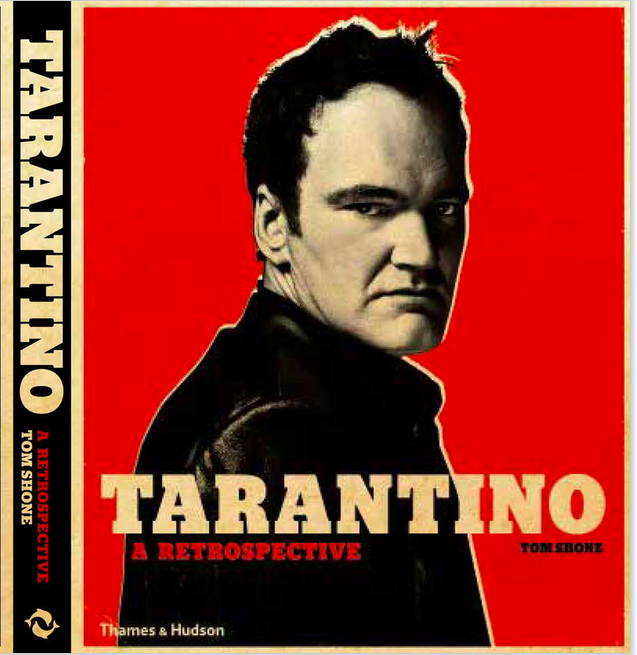 One of the things I love about Alien was the imaginative effort it took to live up to its title. Unlike so many past attempts to imagine aliens and their worlds, Scott's gyno-shocker-masterpiece presented us with something that seemed genuinely other, exotic, non-human. It seemed alien. From the Giger-designed creature itself — eyeless, with an extended cranium, and its endless sets of jaws-with-jaws — to the space wreck in which we first found it, with its rack-of-rib-lined corridors and fallopian-tube doorways, the film presented us with a queasily beautiful mixture of the mechanical and the organic, like a cross between a cathedral and a quadruple bypass operation. Scott's new movie, Prometheus, blithely undoes all that, reconverting all that foreignness back into the reliably humanoid. The space jockey is just a suit; underneath it looks just like a human, or to be more specific, a glow-in-the-dark ancient Greek, entombed in a room of ancient hieroglyphs. Here is Scott:—
One of the things I love about Alien was the imaginative effort it took to live up to its title. Unlike so many past attempts to imagine aliens and their worlds, Scott's gyno-shocker-masterpiece presented us with something that seemed genuinely other, exotic, non-human. It seemed alien. From the Giger-designed creature itself — eyeless, with an extended cranium, and its endless sets of jaws-with-jaws — to the space wreck in which we first found it, with its rack-of-rib-lined corridors and fallopian-tube doorways, the film presented us with a queasily beautiful mixture of the mechanical and the organic, like a cross between a cathedral and a quadruple bypass operation. Scott's new movie, Prometheus, blithely undoes all that, reconverting all that foreignness back into the reliably humanoid. The space jockey is just a suit; underneath it looks just like a human, or to be more specific, a glow-in-the-dark ancient Greek, entombed in a room of ancient hieroglyphs. Here is Scott:—
“[I've wanted to revisit it for] years! Years, years, years… I always wondered when they did [Aliens] 2,3 and 4 why they hadn’t touched upon that, instead of evolving into some other fantastic story. They missed the biggest question of them all: who’s the big guy? And where were they going? And with what? Why that cargo? There’s all kinds of questions.”
Why did the other directors pass up on the space jockey? Why would anyone want to make a film about Hannibal Lecter's last victim but one? Who cares? That lordly condescension towards the other directors in the series is what tips the wink as to what he is really up to here: it's a pissing war, with Sir Ridley come to reclaim what is rightfully his and reproclaim himself lord of the manor. He has made one of the most expensive category errors in the history of movies — gussying up a fragment of McGuffin like a Faberge egg. Trust Scott to mistake a beautiful detail for an entire movie: his films are nothing but details. Larded with mythopeic themes and pseudo-religious pontification, the film is inferior to its predecessors in every way save that of hardware and landscapes — we get one of the best-looking space ships ever put to film, plus some fabulous, roiling skyscapes once we touch down — although it begs the question dodged by Lucas with his Star Wars prequels, namely: how come the technology is more sophisticated than that seen in the first film? After Alien's revolutionary experiment in post-industrial grunge, we're back to shiny, silver space-suits. In tone, Prometheus is actually rather similar to Dan O Bannon's script for Alien before Walter Hill got his hands on it. There were pyramids, and holograms, and an all-male cast, who spoke at length about “what should be done” in stiff, officer-class locutions, but never got around to doing very much:—
STANDARD steps forward and slaps ROBY across the face.
The others are shocked.
HUNTER: Hey now, what is this?
STANDARD: Ask him.
ROBY: I understood why you did that.
STANDARD: Good...
After a hard stare at Roby, Standard give him a curt nod and turns his attention to the machinery.
It read like
The Last Days of the British Raj — all curt nods, hard stares and stiff upper lips in space. “It had not even B-picture merit,” said Hill. “Nobody could take it seriously. It had a ‘Jesus gadzooks’ quality about it”. Hill dropped the pyramids, introduced a computer called mother, made two of the characters women, introduced a note of oily class warfare between the officers and the working-class crew, and streamlined the whole thing with his headlong, hard-boiled style — somewhere between “staccato and blank verse”:—
A red stain.
Then a smear of blood blossoms on his chest.
The fabric of his tunic is ripped open.
A small head the size of a man’s fist pushes out.
The tiny head lunges forward, comes spurting out of Dallas’s chest trailing a thick body.
Spatters fluids and blood in its wake.
Lands in the middle of the dishes and food.
Wriggles away while the crew scatters.
What Scott and writer Damon Lindelof have done is reconvert the Alien franchise back into its Gadzooks phase: there are pyramids and holograms and stiff office-class locutions from an icy Charlize Theron — a one-woman repository of curt nods and hard stares. We even get a nod to David Lean, courtesy of David the android's obsession with Lawrence of Arabia: all very interesting, if you buy into the idea of Scott as a purveyor of high-quality epic, but I longed for a burst of Hill's hard-charging rhino momentum
. Scott has made it clear that his isn't quite a prequel in the normal sense, but a film which incorporates "the DNA" of the series, which is a fancy way of saying he wants to prod the franchise for every viscous drip — we get no less than four types of alien creature, a self-inflicted birth, more milky-blooded androids — without the discipline involved in cleaving to its rules. It takes a giant crap in the space helmet of the series. Turns out: when John Hurt lands on the alien planet* at the beginning of Alien, he need only have rolled that ship over an inch and he would have found the flattened form of Charlize Theron. And the alien is really the grand-child of the Girl with the Dragon Tattoo. No. C-
* Some kind souls on Twitter have pointed out to me that Scott has set this on a different planet to the one we see in Alien. To which I can only say: excuse me? You mean to say that Scott's own stated reason for making the film — to show us who the space jockey was, where that crashed spaceship came from and why it contained alien eggs — that was all a feint, too? We're not even scratching that itch?
 My column about Disney Princesses for The Guardian: —
My column about Disney Princesses for The Guardian: —




















































